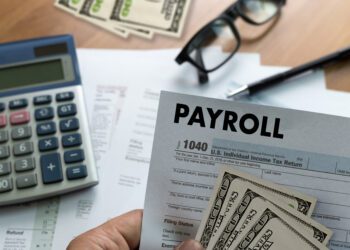In this moment, asking the right questions is one of the most powerful actions a leader can take. That’s because good questions don’t just help you find answers—they open up your thinking and help you see your choices from new perspectives.
1. What decision today will still make sense a year from now?
It’s easy to make decisions that solve immediate problems but create downstream consequences. Asking this question forces leaders to pause and consider the durability of their choices, injecting long-term thinking into short-term chaos.
Answering this question doesn’t require perfect foresight, but it does require clarity: What direction are we truly committed to? What values do we want this decision to reflect? What kind of risk are we willing to carry forward? The question acts as a filter—helping teams move beyond panic or pressure to make decisions that align with where they want to go rather than simply reinforcing where they are. It prioritizes resilience over quick wins and strategy over noise.
2. If a year from now this decision was used as an example of our leadership, what would it teach?
In uncertain times, when data is incomplete and outcomes feel unpredictable, this question helps leaders shift from reactive problem-solving to intentional meaning-making.
This is more than a reflection question—it’s a reframing device. It asks: What kind of story are we writing with this decision? What would others learn—not just about what we did, but about how we showed up?
Unlike a question that focuses on whether a decision will stand the test of time, this question is about what your decisions say about you—your priorities, courage, and clarity. It’s strategic because it prompts leaders to widen the lens and consider how their choices reflect the culture they’re building and the example they’re setting.
3. What if this isn’t the storm—what if it’s the climate?
This question flips the way leaders typically frame disruption. Rather than treating volatility as a temporary storm to wait out, it asks you to consider: What if this is the new normal?
That shift is more than semantic—it’s strategic. It challenges the instinct to delay, defer, or design for an imagined return to stability, and it invites you to stop optimizing for recovery and start preparing for persistence and building for endurance. It encourages investments in systems, culture, and capabilities that can flex under pressure—not snap. By confronting uncertainty head-on, leaders move from reactive to resilient, making choices that don’t just survive the current moment, but thrive across whatever comes next.
4. What’s the cost of waiting?
In a crisis, the instinct to pause—to wait for more data, for more certainty, for the fog to clear—can feel responsible and prudent. Leaders are taught to avoid rushing, to reduce risk, and to base decisions on evidence.
But in volatile environments, the pursuit of perfect clarity often conceals a hidden cost: the cost of inaction. That’s what makes this question so strategic. It forces leaders to confront not just the risk of moving too soon, but the equally dangerous risk of moving too late.
This question shifts the decision lens from fear-based delay to opportunity-focused action. It encourages leaders to examine what may be lost by hesitating: market position, momentum, team morale, innovation windows, or the chance to lead rather than follow.












